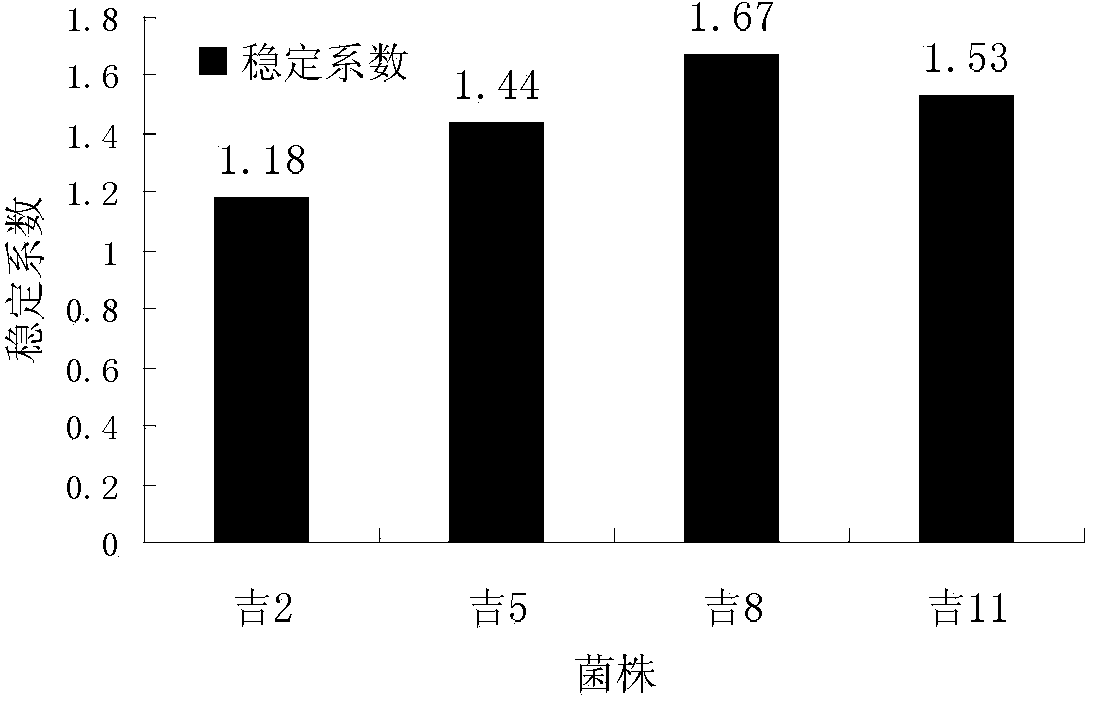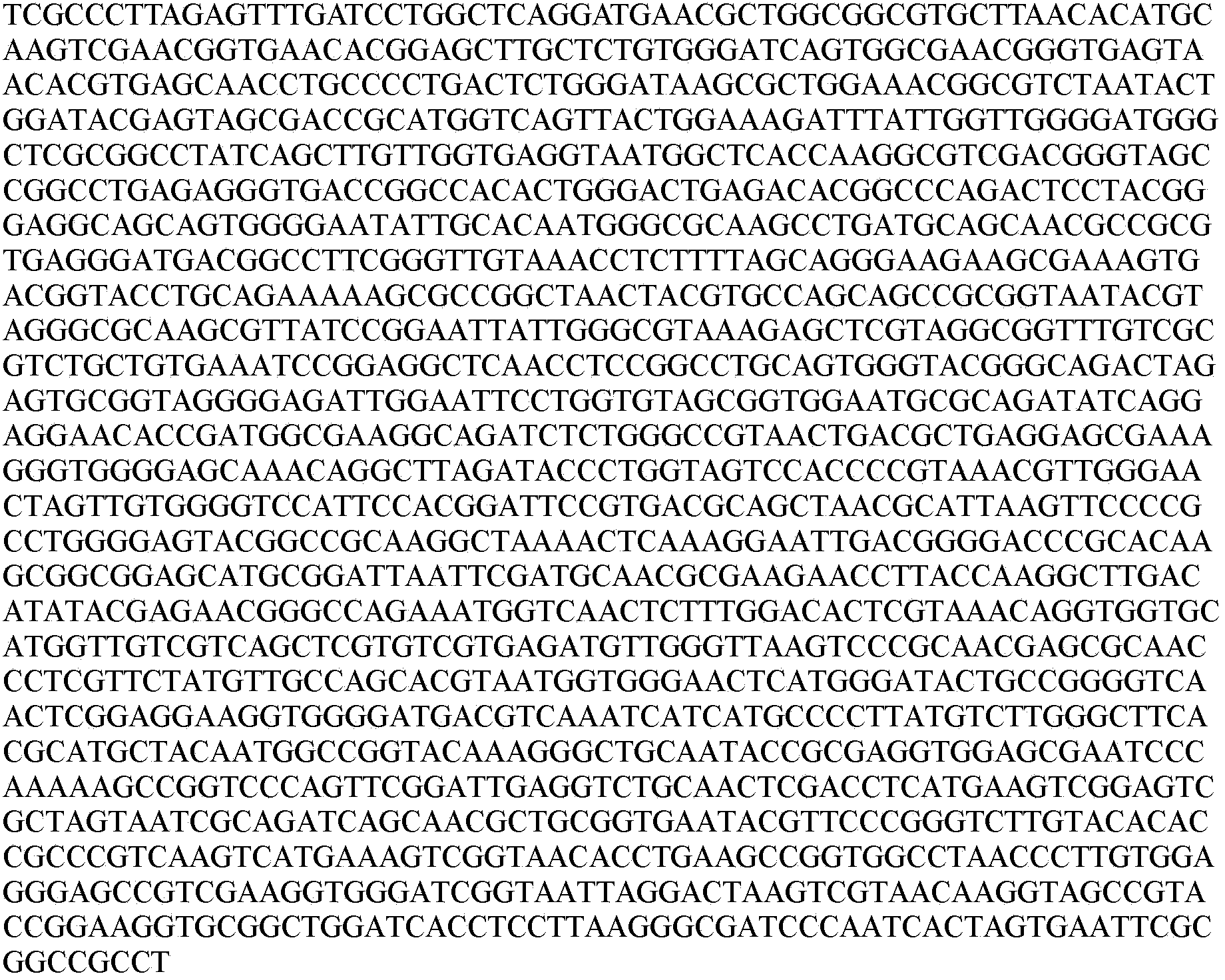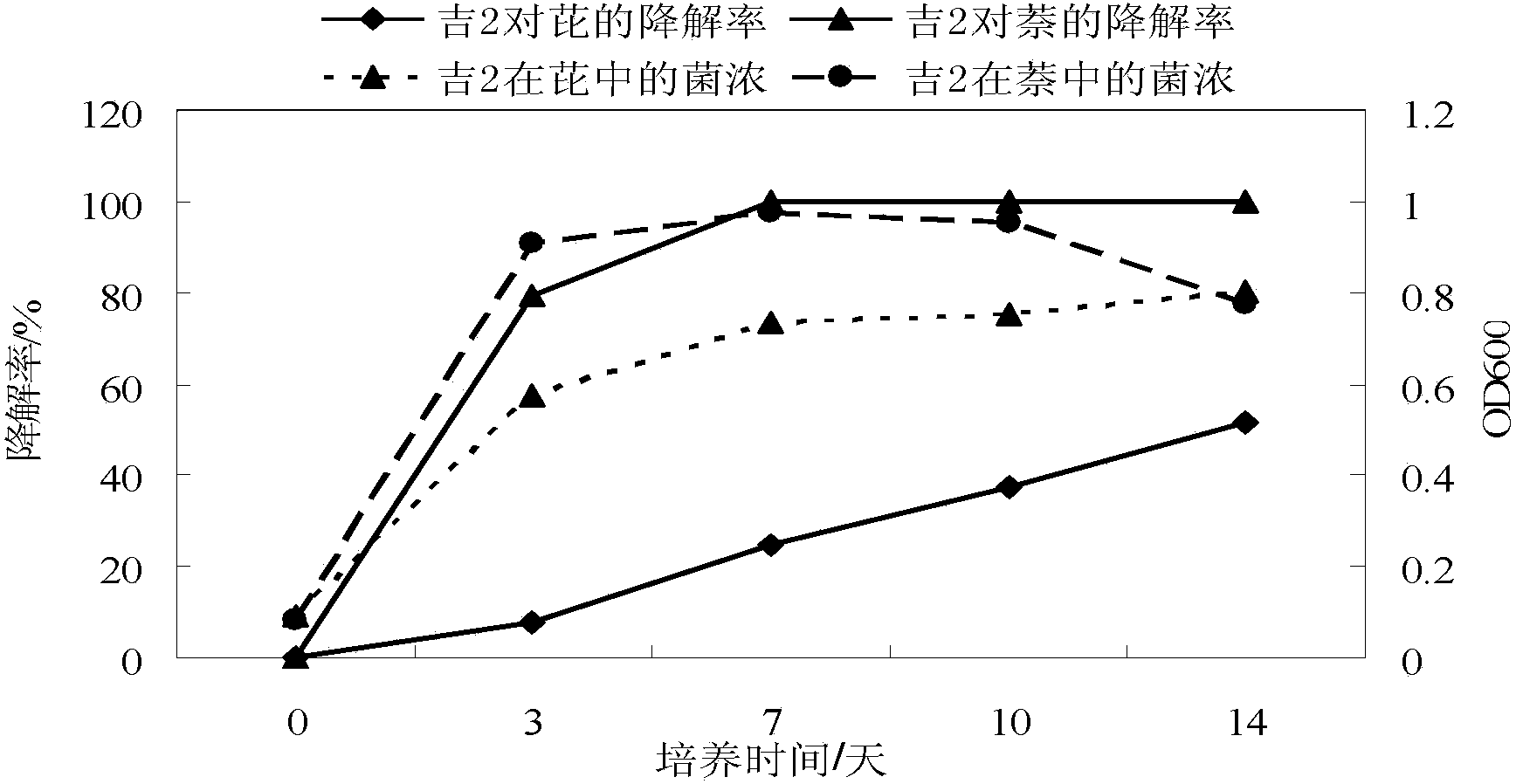Microbacterium oxydans for degrading polycyclic aromatic hydrocarbon and application thereof
A technology for oxidizing microbacteria and polycyclic aromatic hydrocarbons, which can be used in the fields of microbial biotechnology and environmental biology, and can solve the problems of high content of polycyclic aromatic hydrocarbons and refractory crude oil components.
- Summary
- Abstract
- Description
- Claims
- Application Information
AI Technical Summary
Problems solved by technology
Method used
Image
Examples
Embodiment 1
[0043] Embodiment 1: Screening and breeding of microbacterium oxydans (Microbacterium oxydans) Ji 2 bacterial strain provided by the present invention
[0044] Take a water sample from Zhongyuan Oilfield, oscillate evenly, take 10ml with a pipette, and inoculate aseptically into 100ml inorganic salt basic medium (culture medium composition g / L: heavy oil 5, K 2 HPO 4 1, KH 2 PO 4 1. NaNO 3 4. MgSO 4 0.5, (NH 4 ) 2 SO 4 2. Yeast powder 0.2, distilled water, 1000ml, pH7.2, sterilized at 121°C for 30min, cultured on a shaker at 35°C for 7 days. Dilute the enriched shake flask with sterile water to 10 -5 、10 -6 、10 -7 , spread on new Wang's + liquid wax and LB plates, culture at 35°C for 2 days, and select strains with different colony shapes and sizes. Observe the colonies that grow. Single colonies were picked and checked for purity using a microscope. Inoculate each colony grown at 35°C into nutrient broth medium and cultivate to OD 600 It is about 0.8, and it is in...
Embodiment 2
[0045] Embodiment 2: Morphological characteristics and physiological and biochemical characteristics of the microbacterium oxydans (Microbacterium oxydans) Ji 2 bacterial strain provided by the present invention
[0046] Carry out with reference to the experimental method of "Bergey's Manual of Systematic Bacteriology" (Vol.Ⅷ), detect the bacterium colony morphology of Ji 2 of the present invention, Gram staining, thalline size and shape, presence or absence of flagella and spores, growth temperature, growth pH range , NaCl tolerance. Catalase, V-P, mouse acute oral, casein hydrolysis, gelatin hydrolysis, starch hydrolysis, nitrate reduction to nitrite, cellulose hydrolysis, glucose gas production, tyrosine hydrolysis, phenylalanine dehydrogenase, Yolk lecithinase, NaCl and KCl requirement, allantoin and urea salt requirement, oxidase, lysozyme resistance, D-glucose, L-arabinose, D-xylose, D-mannitol acid production, citrate and propionate requirements etc. experiments.
[0...
Embodiment 3
[0048] Embodiment 3: The present invention provides the PCR amplification and sequence determination of the 16S rRNA gene of Microbacterium oxydans (Microbacterium oxydans) Ji 2 bacterial strain
[0049] The Ji 2 bacterial strain of the present invention was inoculated in LB medium, cultured on a shaker at 35°C (120rpm) for 24h, centrifuged to collect the bacteria, resuspended, added lysozyme and SDS to break the wall, extracted genomic DNA by the phenol-chloroform method, and used Forward primer 8F (5'-AGA GTT TGA TCC TGG CTC AG-3', SEQ ID No.2) and reverse primer 1541R (5'-AAGGAGGTGATCCA GCC-3', SEQ ID No.3), use this pair The primers were used to amplify the 16SrDNA gene by PCR, and the amplified primers were sent to Shanghai Meiji Company for sequencing. The PCR conditions are: 94°C, 10min; 94°C, 45s, 55°C, 45s, 72°C, 90s, 30 cycles; 72°C, 10min, 4°C storage. The length of the 16S rDNA gene sequence is 1563bp (SEQ ID No.1), the accession number in GenBank is KJ627769, and...
PUM
| Property | Measurement | Unit |
|---|---|---|
| temperature | aaaaa | aaaaa |
| diameter | aaaaa | aaaaa |
| diameter | aaaaa | aaaaa |
Abstract
Description
Claims
Application Information
 Login to View More
Login to View More - R&D
- Intellectual Property
- Life Sciences
- Materials
- Tech Scout
- Unparalleled Data Quality
- Higher Quality Content
- 60% Fewer Hallucinations
Browse by: Latest US Patents, China's latest patents, Technical Efficacy Thesaurus, Application Domain, Technology Topic, Popular Technical Reports.
© 2025 PatSnap. All rights reserved.Legal|Privacy policy|Modern Slavery Act Transparency Statement|Sitemap|About US| Contact US: help@patsnap.com



